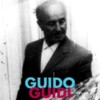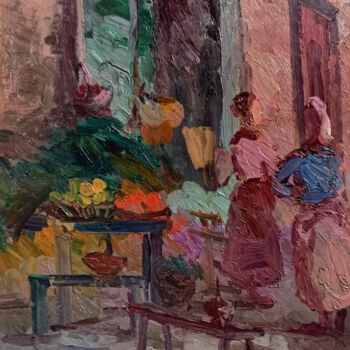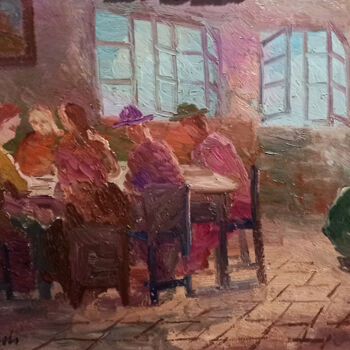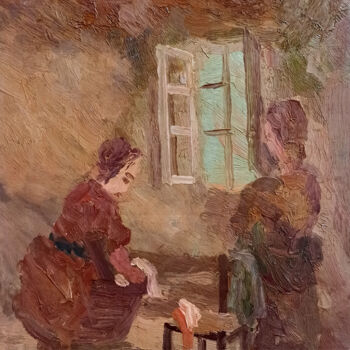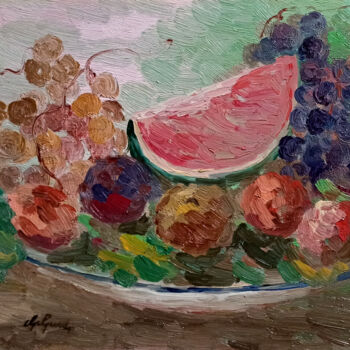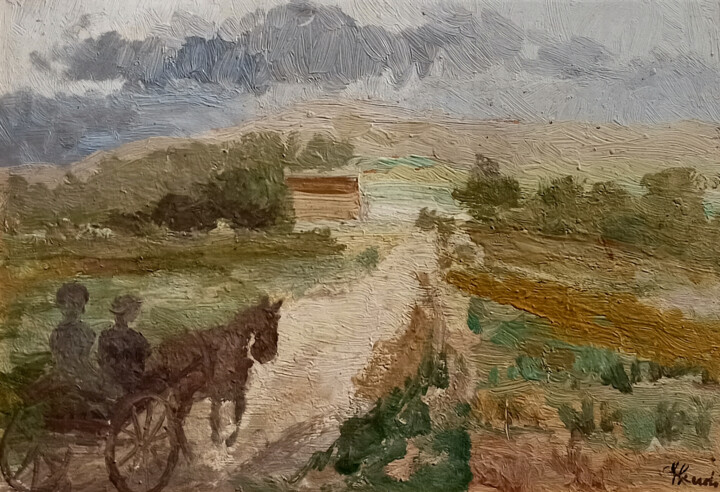
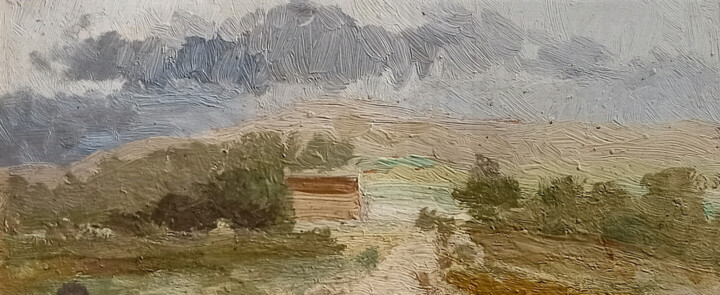
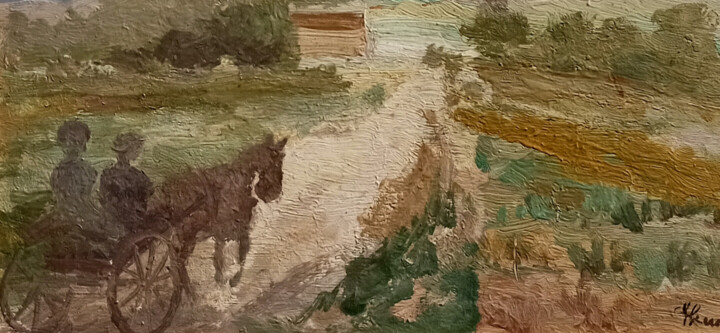
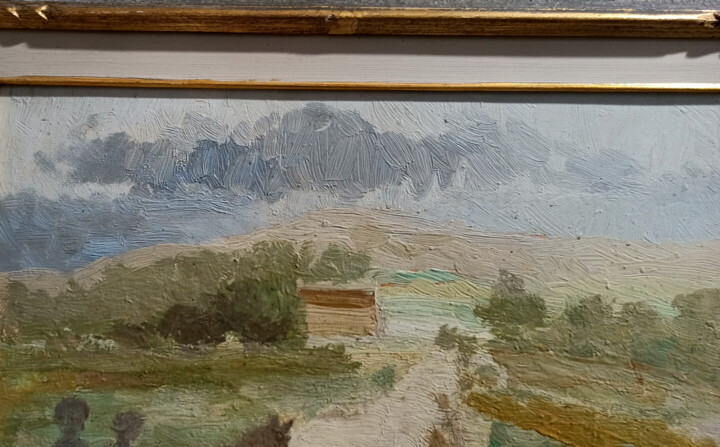
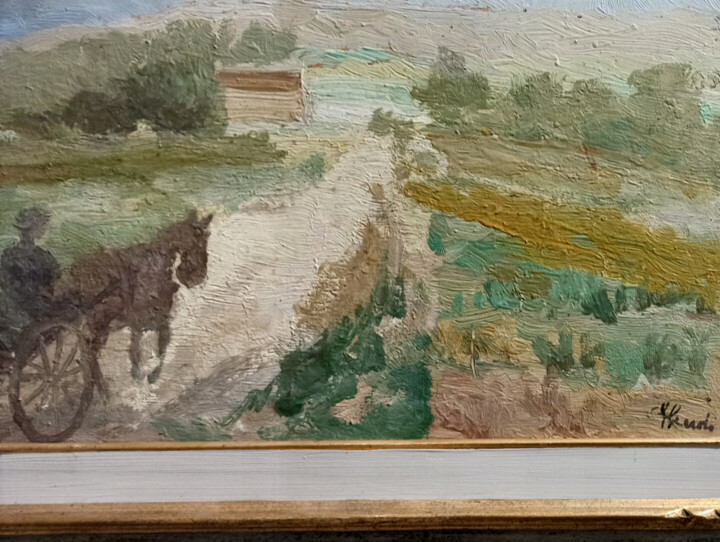
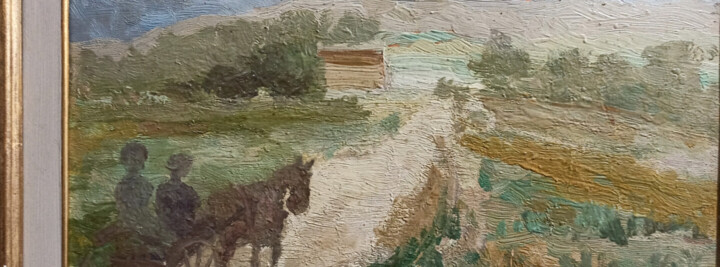
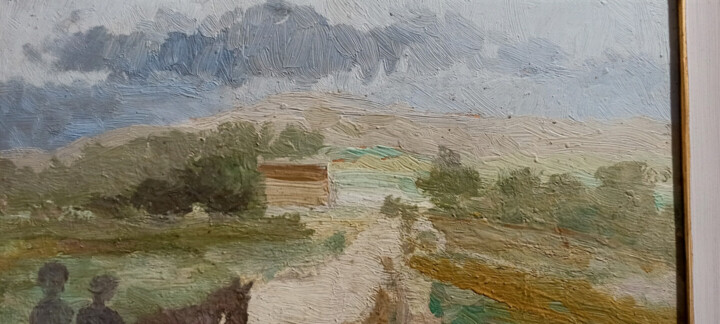
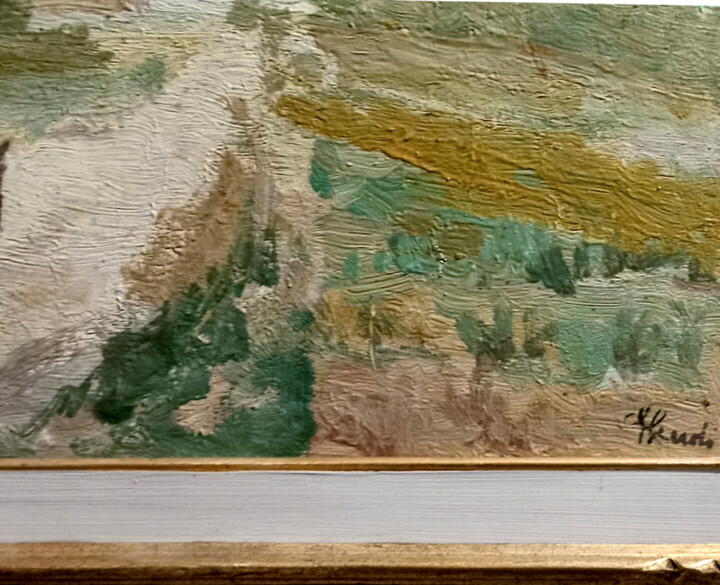
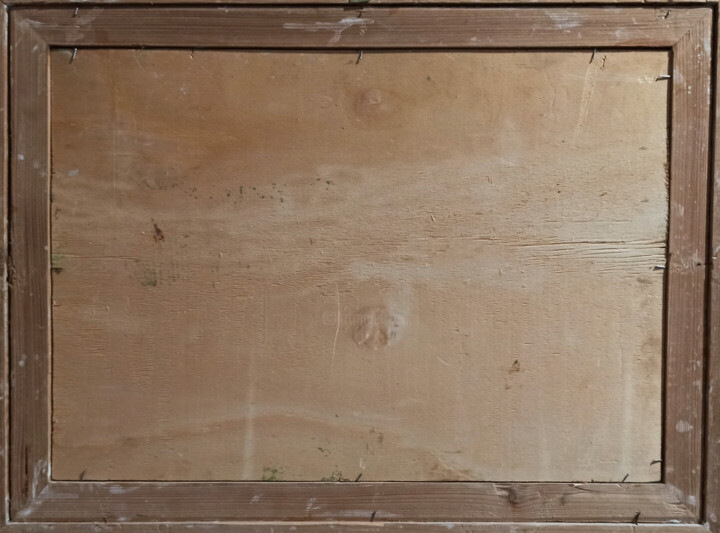
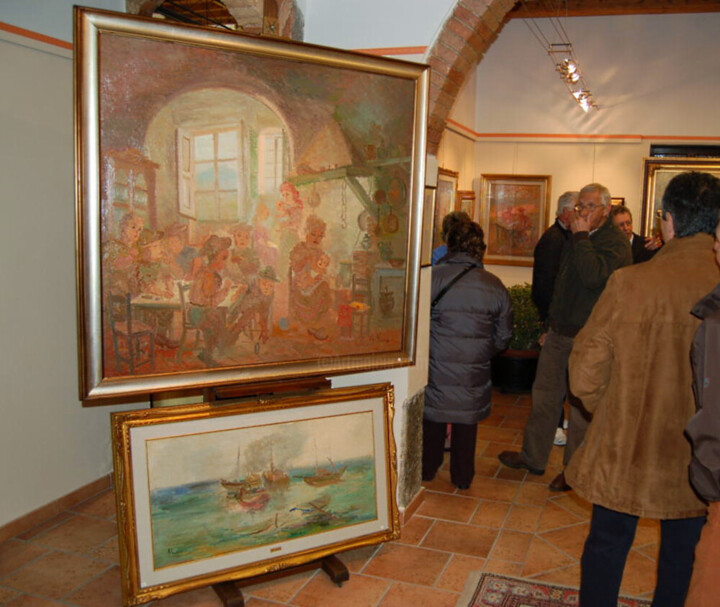
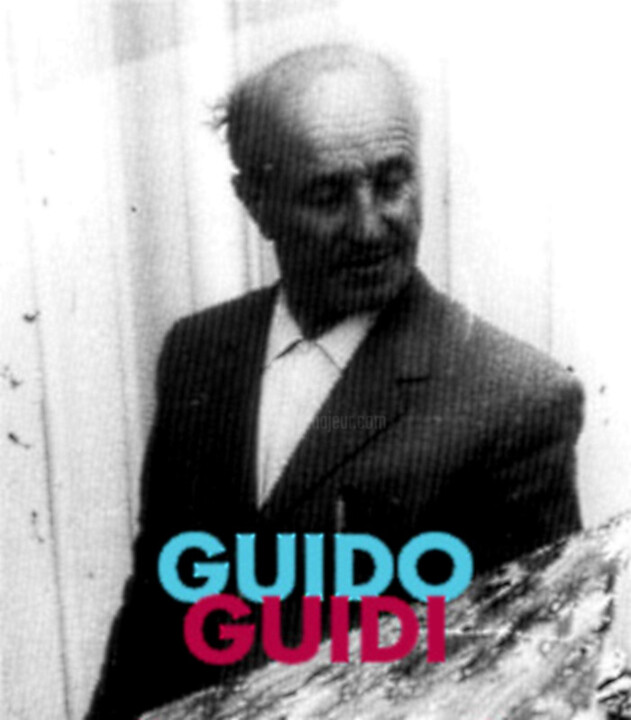


Laat het ons weten als je meer foto's van dit kunstwerk wilt zien!
- Achterkant van het werk / Kant van het werk
- Details / Handtekening / Het oppervlak of de textuur van het kunstwerk
- Kunstwerk in situatie, Ander...
Country road - Old Italian painting (1970) Schilderij door Guido Guidi
Meer info
- Verpakking (Doos of kartonnen verpakking) Alle kunstwerken worden verzonden met een premium carrier, zorgvuldig beschermd en verzekerd.
- Tracking Opvolging van de levering tot aan de bezorging bij de koper. Er wordt een tracking nummer verstrekt zodat u het pakket in real-time kunt volgen.
- Vertraging De meeste pakketten worden wereldwijd binnen 1 tot 3 weken geleverd (Schatting)
- Douane niet inbegrepen De prijs is exclusief douanekosten. De meeste landen hebben geen invoerbelasting voor originele kunstwerken, maar het kan zijn dat u de verlaagde btw moet betalen. Douanekosten (indien van toepassing) worden bij aankomst berekend door het douanekantoor en worden apart in rekening gebracht door de vervoerder.
Meer info
- Volgbaar online certificaat van echtheid Echtheidscertificaten kunnen op elk moment online worden geverifieerd door de code van het kunstwerk te scannen.
- Certificering van de Kunstenaarswaarde De experts bestuderen het werk en de carrière van een kunstenaar om een onafhankelijke en vetrouwbare gemiddelde waarde vast te stellen. De gemiddelde waarde stelt de kunstenaar in staat zich voor een bepaalde periode in een prijsklasse te plaatsen. Ook kan aan de deskundige gevraagd worden om een precieze schatting te geven voor een specifiek werk.
Meer info
100% veilig betalen met SSL-certificaat + 3D Secure.
Meer info
-
Origineel Kunstwerk (One Of A Kind)
Schilderij,
Olie
op Hout
- Dimensies Hoogte 13,8in, Breedte 19,7in
- Staat van kunstwerk Het werk is in zeer goede staat
- Framing Dit kunstwerk is niet ingelijst
- Categorieën Schilderijen onder US$ 500 Surrealisme Platteland
Guidi's paintings must have an authentication, we will send our certificate in accordance with the law, stamped and signed
Medium : oil on wooden hardboard - 70s in good condition no restoration necessary
Title or subject : " Country road - life in the past "
Measures painting : 35 x 50 cm - 13.7 x 19.6 inches - frame not included
The painting will be polished with "DAMAR" transparent varnish for protection and brilliance of the colours
Shipping by Fedex or DHL express from Italy
For any information we are at your disposition
GUIDO GUIDI
Guido Guidi (1901-1998) was born in Livorno, generally indicated as a link between the great Macchiaioli and subsequent generations. From an early age he demonstrated a certain predisposition for drawing, through which he established his own observations regarding shapes and colors, also showing a certain manual skill.
After completing his studies at primary school, in 1912 he enrolled at the Institute of Arts and Crafts, which he attended only for a short time, as he was soon called back to work as a cobbler by the family's serious economic conditions. Following this experience he decided to open his own shop in 1916, in the midst of the First World War, and in fact, he was called up to arms with the III Cavalry Regiment in Ferrara already in 1919. Despite the work to improve his own economic conditions and family members, he continued to exercise his passion for drawing through life studies. Even the war events did not stop his desire to experiment and from these years some scenes of military life remained, which later also returned in his painting, to testify how the artist lived this period intensely and how certain events remained imprinted in his memory.
In 1924 he exhibited his paintings in public for the first time in a collective exhibition called Cenacolo degli Illustri near Florence while, in 1927, the year of his marriage, he exhibited at Bottega d'Arte in Livorno with his first personal exhibition and linked his art for some time to his brother-in-law Galliano Masini, already an established tenor, who as an enlightened patron purchased his entire production, thus also alleviating the artist's psychological suffering.
Unfortunately, despite some exhibition successes and recognitions, such as the purchase of one of his paintings by the Royal House in 1936, the artist was never abandoned by a certain mental illness, also due to the end of his association with Masini, which forced him to frequent hospitalizations in Volterra and Pisa. This condition of economic and above all internal instability led to a move away from painting, coinciding precisely with the Second World War.
He enthusiastically resumed his activity at the end of the 1940s and 1955 marked his great return through an exhibition for the Rassegna di Arte Popolare in Rome, followed by another exhibition at the Bottega d'Arte in Livorno, in 1956, which was repeated in 1959. In 1961 he was also present in Florence at the Galleria Cancelli, as a member of the Labronico Group.
After several years spent practically in isolation, in close contact only with his own palette, the artist quickly found himself in contention among the most important Italian gallery owners and collectors who, struck by his very personal way of painting, invaded his studio. .
Thus began a period of intense exhibition activity for Guidi, which led him to visit all the most important Italian cities, through the largest artistic events of the Italian post-war period.
A recurring stop was for the artist in Livorno, where, in 1966, he held an anthological exhibition organized by the Municipality at the Casa della Cultura, which consecrated him among the greatest Labronian painters of the twentieth century, giving definitive recognition to his art.
In the Seventies his participations continued, both in large international events, such as the Biennial of European Contemporary Art, held in Athens in 1972, and in the most important Italian galleries.
In 1984, as further confirmation of the popularity and success achieved, a monograph was published by Matteoni Editori of Lucca, edited by Piero Caprile, Elio Mercuri and Adolfo Tucci. The last exhibitions were held at the Athena Gallery in Livorno, in 1996, and at the Giardino dell'Arte of Montenero, in 1997.
Guidi passed away in 1998 and his memory was immediately celebrated through a series of retrospectives dedicated to the person and the artist.
Guidi's art is born from his own, spontaneous need, which starts from his interiority. He is part of the group of artists who grew up developing their self-taught skills, living a little on the margins, but this must not be seen as something reductive for the artist, on the contrary, if he had not lived an experience of this type his art would certainly have had different developments and perhaps it would not have been free from external conditioning as it was. He was able to give free rein to his own interiority, to his own feelings, without using languages already used by others. Guidi constructs the shapes and figures through rapid, almost summary brushstrokes, blurring the contours of the subjects represented. The colour, always bright and lively, dominates, but never goes so far as to cancel out the figures portrayed. His painting is spontaneous, free, it does not follow a predetermined evolutionary path, it draws inspiration from everyday life, the forms and situations are recognizable by everyone. Through his canvases he is able to lower the observer into a space that seems to take him into an almost dreamlike dimension, perhaps precisely the result of his brushstrokes, his colours, the diffused brightness, which also remains linked to contexts and spaces which are those typical of the reality known and recognizable by all, which however appears here in an unexpected dimension.
Verwante thema's
Guido Guidi (1901-1998) werd geboren in Livorno en wordt algemeen beschouwd als de brugfiguur tussen de Macchioli-schilders en de daaropvolgende generatie. Van jongs af aan toonde Guidi een natuurlijke neiging tot kunst, en in 1912 schreef hij zich in voor de kunstacademie. Vanwege financiële problemen werd hij echter al na een paar maanden gedwongen te vertrekken om zijn gezin te onderhouden.
Ondanks de uitdagingen bleef Guidi zijn passie voor kunst nastreven terwijl hij werkte om zijn gezin te onderhouden. Zelfs in oorlogstijd bleef hij experimenteren met zijn artistieke expressie, waarbij hij militaire scènes vastlegde die later zijn schilderijen zouden beïnvloeden.
Guidi's eerste openbare tentoonstelling vond plaats in 1924 in de "Cenacolo degli illustri" in Florence. In 1927 hield hij een persoonlijke tentoonstelling in de Bottega d'arte in Livorno, met steun van zijn zwager, Giuliano Masini, die veel van zijn werken kocht. Guidi's leven werd echter gekenmerkt door psychologische problemen die werden verergerd door het einde van zijn gemeenschap met Masini, wat leidde tot perioden van behandeling in Volterra en Pisa.
Ondanks tegenslagen kende Guidi eind jaren veertig een heropleving. Zijn comeback werd versterkt met tentoonstellingen in Rome, Livorno en Florence gedurende de jaren vijftig en begin jaren zestig. Ondanks jaren van isolatie trok Guidi's unieke stijl de aandacht van vooraanstaande kunsthandelaren en verzamelaars in heel Italië.
Livorno bleef belangrijk voor Guidi, met als hoogtepunt een retrospectieve tentoonstelling georganiseerd door de gemeente in 1966 in het Huis van Cultuur, die een definitieve erkenning bood van zijn artistieke nalatenschap.
Guido Guidi's leven en werk zijn een voorbeeld van veerkracht en vastberadenheid, waarbij hij tegenslagen overwint en een onuitwisbare stempel achterlaat op de Italiaanse kunstscène.
-
Nationaliteit:
ITALIË

- Geboortedatum : 1901
- Artistieke domeinen: Vertegenwoordigd door een galerij,
- Groepen: Hedendaagse Italiaanse Kunstenaars Kunstenaars gepresenteerd door een galerij























